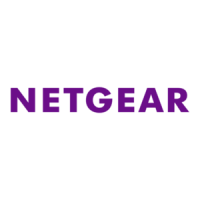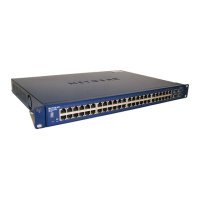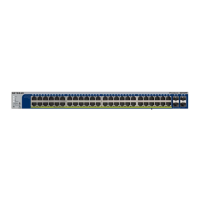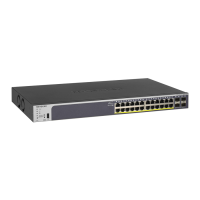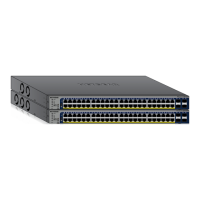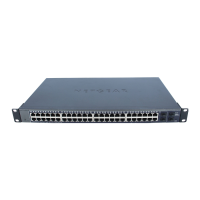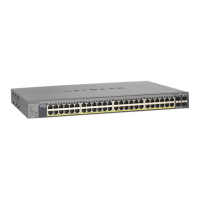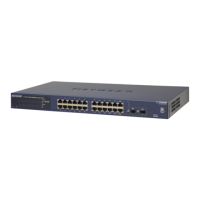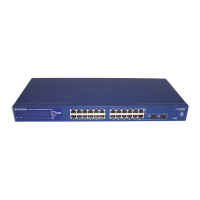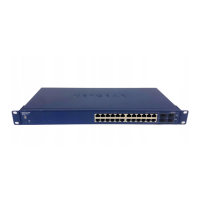83
GS716T and GS724T Gigabit Smart Switches
In particular, the following behavior of combo port mechanism is followed:
1. When SFP transceiver is present in (plugged into) the SFP slot and optical link is
established via the SFP transceiver the combo port mechanism will use the SFP
transceiver and shut down the RJ-45 copper port regardless of the state of the latter
(that is, regardless of the copper port link being up or down);
2. If (and while) the optical link is down (SFP transceiver is not present in the SFP slot or fiber
cable is unplugged from SFP transceiver or optical link is shut down on the other side of the
fiber cable, etc.), then the combo port mechanism will use the RJ-45 copper port.
It is possible to switch between the RJ-45 copper port and the SFP transceiver without a
system reboot or reset.
Link Aggregation Groups
Link aggregation groups (LAGs), which are also known as port-channels, allow you to
combine multiple full-duplex Ethernet links into a single logical link. Network devices treat the
aggregation as if it were a single link, which increases fault tolerance and provides load
sharing. You assign the LAG VLAN membership after you create a LAG. The LAG by default
becomes a member of the management VLAN.
A LAG interface can be either static or dynamic, but not both. All members of a LAG must
participate in the same protocols. A static port-channel interface does not require a partner
system to be able to aggregate its member ports.
Static LAGs are supported. When a port is added to a LAG as a static member, it neither
transmits nor receives LAGPDUs. The GS716T and GS724T Smart Switches supports eight
LAGs.
From the LAGs link, you can access the following pages:
• LAG Configuration on page 84
• LAG Membership on page 85
• LACP Configuration on page 87
• LACP Port Configuration on page 88
